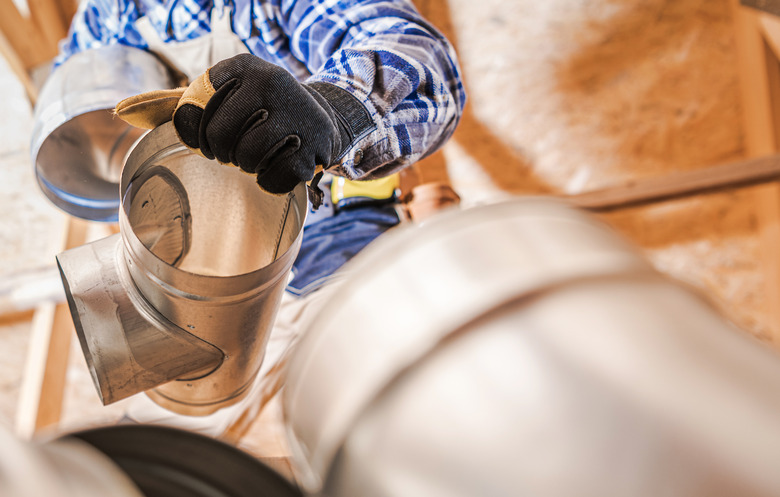Is Duct Tape Safe For Dryer Vents?
We may receive a commission on purchases made from links.
The convenience of the modern dryer, whether gas or electric, makes it a household essential for busy homeowners. While readily available, duct tape is not safe for dryer vents; use aluminum foil tape instead. When venting a dryer outside, it's important to use the right kind of long-lasting, heat-resistant tape to seal the ducting and prevent lint and dust from spraying into the laundry room, walls, basement or attic.
Tip
Duct tape is the wrong product for any kind of ducting, including dryer hoses and vents. Use foil tape to seal all heating, cooling and dryer ducting.
Tape for Dryer Vents
Tape for Dryer Vents
Ironically, "duct tape" is not used for ducts. Any time you're sealing the connections between heating, cooling or dryer ducts and vents, you need a heat-resistant tape, like aluminum foil tape, which is made for this purpose. Foil tape doesn't dry out, so once the dryer duct and vent are installed, the system will remain secure.
When it's midnight and the stores are closed, you might reach for the duct tape as a temporary fix. However, due to the heat that passes through the dryer hose, it will dry out, lose its adhesion and eventually spring a leak. The resulting release of dust and lint is a fire hazard. Remove and replace the duct tape as soon as you can because it isn't made for this purpose and thus isn't safe for long-term use.
Types of Dryer Ducting
Types of Dryer Ducting
While the type of tape is important, to avoid lint buildup inside the dryer hose, use the right kind of ducting. The inexpensive flexible vinyl or plastic dryer hoses that you stretch to fit the space between the dryer and outer vent are not recommended. The ridges inside the ducting catch lint, making them a fire hazard. The aluminum flexible dryer hoses have the same issues with catching lint, so avoid using them if possible.
The recommended choices include rigid or flexible metal ducting or a combination of the two to make a solid connection from the dryer to the outer vent. These allow the lint-filled hot air to flow freely from the dryer to the outside air. Use foil tape to seal the connections, not duct tape.
Dryer Vent Safety
Dryer Vent Safety
Dryers should always vent outside, even if it means running the ducting out of a window or cutting a hole in an exterior wall. Though there are indoor venting kits for electric dryers, these are not safe for continuous use. Venting the dryer indoors releases moisture into the air, which encourages mold and mildew and is against building codes in most locations.
Use foil tape to connect the ducting and avoid screws and bolts that extend into the interior of the duct pipes. They collect lint, much like the ridges in vinyl hoses. On the far end of the duct, don't use screens or pest cages, as these can also clog and increase the fire hazard of built-up lint. A better choice is a simple louvered vent cover that opens with the air pressure when the dryer is running and closes when the dryer shuts off.
At least once a year and more often if the dryer is taking longer to dry your clothes, clean the dryer vent. A vent brush works for short runs, but if your dryer vent extends 20 feet or more under the house or through walls, consider a dryer vent cleaner kit, which attaches to an electric drill. You can use it with or without a drill to power brush the inside of the duct and clear out accumulated lint and blockages.
